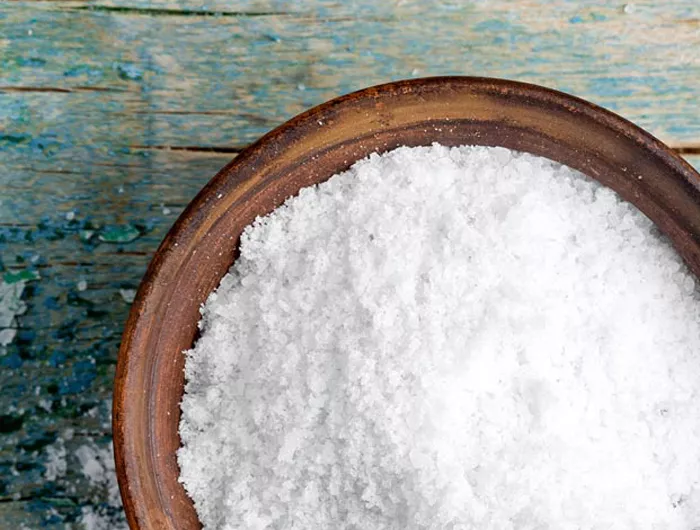"Heart Attack Entrées and Side Orders of Stroke"

Sea Wave - stock.adobe.com.
Overly Salty Restaurant Meals Present Long-Term Health Risks for All, and Immediate Danger for Some
WASHINGTON—Unsafe levels of sodium chloride, or salt, in chain restaurant meals increase one's chance of developing hypertension, heart attacks, strokes, and kidney disease according to the Center for Science in the Public Interest. The nonprofit food safety and nutrition watchdog group today is exposing chain restaurant meals with dangerously high levels of sodium and is renewing its call on industry and government to lower sodium levels in foods.
People with high blood pressure, African Americans, and people middle-aged and older—70 percent of the population—should consume no more than 1,500 milligrams (mg) of sodium daily, according to the government’s dietary advice. Others should consume no more than 2,300 mg of sodium per day. Yet it is almost impossible to get restaurant meals with reasonably safe levels of sodium. A lifetime of eating much more than the recommended amounts of sodium presents an increased risk of disease in the long term. But for some, particularly the elderly, consuming 4,000 mg or more of sodium in a single meal can present an immediate risk of heart failure or other serious problems.
CSPI researchers examined 17 chains and found that 85 out of 102 meals had more than a day's worth of sodium, and some had more than four days' worth, including these:
- Red Lobster Admirals' Feast with Caesar Salad, Creamy Lobster Topped Mashed Potato, Cheddar Bay Biscuit, and a Lemonade: 7,106 mg
- Chili's Buffalo Chicken Fajitas (with tortillas and condiments) and a Dr Pepper: 6,916 mg
- Chili's Honey-Chipotle Ribs with Mashed Potatoes with Gravy, Seasonal Vegetables, and a Dr Pepper: 6,440 mg
- Olive Garden Tour of Italy (lasagna) with a Breadstick, Garden Fresh Salad with House Dressing, and a Coca-Cola: 6,176 mg
- Olive Garden Chicken Parmigiana with a Breadstick, Garden Fresh Salad with House Dressing, and Raspberry Leonade: 5,735 mg
"Who knows how many Americans have been pushed prematurely into their graves thanks to sodium levels like those found in Olive Garden, Chili's, and Red Lobster?” asked CSPI executive director Michael F. Jacobson. "These chains are sabotaging the food supply. They should cut back and give consumers the freedom to decide for themselves how much salt they want."
"More than 70 percent of older Americans have hypertension and are especially vulnerable," said Dr. Mel Daly, a geriatrician who is Medical Director of the Subacute Unit at Greater Baltimore Medical Center and an associate professor of medicine at Johns Hopkins University School of Medicine. "Many elderly eat frequently at these restaurants because of convenience and cost. But the high sodium levels in many of these meals can lead to a spike in blood pressure and even precipitate heart failure in some individuals."
Children eating at chain restaurants don’t fare much better than their parents or grandparents. According to the Institute of Medicine, children aged 4-8 should consume no more than 1,200 mg of sodium per day. These meals that have one or two days' worth of sodium:
- Red Lobster Chicken Fingers, Biscuit, Fries, Raspberry Lemonade: 2,430 mg
- Chili's Country Fried Chicken Crispers with Rice and 1% milk: 2,385 mg
- KFC Popcorn Chicken with Macaroni and Cheese, Teddy Grahams, and 2% milk: 2,005 mg
- Jack in the Box Chicken Strips Grilled, Buffalo Sauce, Fries, and 1 % milk: 1,980 mg
- Olive Garden Chicken Fingers, Fries, and Raspberry Lemonade: 1,835 mg
"Parents already have enough to worry about with the increasing incidence of obesity and diabetes among children. The restaurant industry should not add to these problems by raising kids’ blood pressure as well," said Dr. Stephen Havas, an adjunct professor of preventive medicine at Northwestern University Feinberg School of Medicine and a former vice president for science, quality, and public health of the American Medical Association. He noted that a 2006 meta-analysis of randomized controlled trials in children found that reducing children's salt intake lowered their blood pressure, and that if lower blood pressure were maintained into adulthood, it would reduce the incidence of cardiovascular disease.
Since 1978, CSPI has been urging the Food and Drug Administration to press for lower salt levels in processed and restaurant foods. In 2005 the group sued the FDA and then petitioned the agency to regulate salt as a food additive, subject to reasonable limits in a given category of food. (Currently, the FDA considers salt to be "generally recognized as safe" and does not put any limits on its use.) Havas and other hypertension experts have estimated that reducing sodium levels in restaurant and packaged foods by half could prevent at least 150,000 premature deaths per year in the United States.
CSPI hopes that new leadership in the Obama administration will look to sodium reduction and other prevention measures as means of making health care reform affordable. Since the Bush administration did nothing to encourage sodium reduction, some city public health departments, particularly New York City's, have begun to press the food and restaurant industries to cut the sodium in their products. Requiring chain restaurants to disclose sodium on menus would help consumers regulate their salt intake and would likely nudge the industry to provide more low-sodium choices, according to CSPI.
"Americans spend north of $15 billion to treat high blood pressure, and many billions more on expensive heart procedures, yet the government spends peanuts improving Americans' diets," said Jacobson. "Getting the food and restaurant industry to use less salt would be one way the Obama Administration could help prevent chronic disease and make health coverage more affordable."
Tomorrow, before the Senate Finance Committee, Jacobson will testify that reducing sodium consumption by just 25 percent over the next 10 years could save the government $9 billion a year in direct medical costs.

